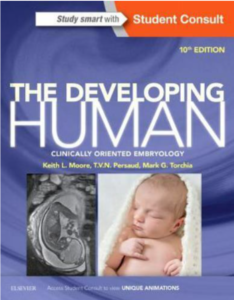Pathology Skin MCQs:
Pathology Skin MCQs: In the world of pathology, understanding the intricate details of skin diseases is crucial for medical students and practitioners alike. Chapter 25 of Alexander J. Lazar authoritative text on “The Skin” provides an in-depth look into various diseases and conditions affecting the skin, with a significant focus on skin cancer. This blog aims to break down this chapter into accessible sections, making it easier for students to navigate and study the material, especially when dealing with MCQs (Multiple Choice Questions).
Chapter Overview
Chapter 25 is divided into six sections, each addressing different aspects of skin pathology. From congenital anomalies to malignant tumors, this chapter covers it all. Total 265 MCQs, Here’s a detailed look at each section:
Section 1: Skin-1
Topics Covered:
The Skin: More Than a Mechanical Barrier
Disorders of Pigmentation and Melanocytes
- Freckle (Ephelis)
- Lentigo
- Melanocytic Nevus (Pigmented Nevus, Mole)
- Dysplastic Nevi
- Melanoma
Total 35 MCQs
Summary: The skin, often viewed as a mechanical barrier, serves various functions beyond protection, including regulating temperature and sensation. Disorders of pigmentation and melanocytes encompass conditions affecting skin coloration and the cells responsible for producing melanin. Freckles (Ephelis) and Lentigo are benign conditions characterized by localized areas of increased pigmentation. Melanocytic nevi, commonly known as moles, are benign growths resulting from the proliferation of melanocytes. Dysplastic nevi are atypical moles that may exhibit irregular features and are considered precursors to melanoma.
Melanoma, the most serious form of skin cancer, arises from malignant transformation of melanocytes and can metastasize if left untreated. This topic comprises a total of 35 multiple-choice questions (MCQs) likely covering the identification, characteristics, and management of these pigmentation disorders and skin cancers.
Section 2: Skin-2
Topics Covered:
Benign Epithelial Tumors
- Seborrheic Keratosis
- Acanthosis Nigricans
- Fibroepithelial Polyp
- Epithelial or Follicular Inclusion Cyst (Wen)
Adnexal (Appendage) Tumors
Premalignant and Malignant Epidermal Tumors
- Actinic Keratosis
- Squamous Cell Carcinoma
- Basal Cell Carcinoma
Total 50 MCQs
Summary: Benign epithelial tumors encompass a variety of non-cancerous growths arising from skin epithelial cells. Seborrheic keratosis, characterized by warty growths, and acanthosis nigricans, marked by darkened, thickened skin, are common benign conditions. Fibroepithelial polyps and epithelial or follicular inclusion cysts, known as wens, are also benign growths often found on the skin. Adnexal (appendage) tumors originate from skin appendages such as hair follicles or sweat glands.
Premalignant and malignant epidermal tumors pose a risk of developing into skin cancer. Actinic keratosis, caused by prolonged sun exposure, may progress to squamous cell carcinoma if left untreated. Squamous cell carcinoma and basal cell carcinoma are the two most common types of skin cancer, arising from the abnormal growth of epidermal cells. This topic includes a total of 50 multiple-choice questions (MCQs) likely covering the identification, characteristics, and management of these benign and malignant epithelial skin tumors.
Section 3: Skin-3
Topics Covered:
Tumors of the Dermis
- Benign Fibrous Histiocytoma (Dermatofibroma)
- Dermatofibrosarcoma Protuberans
Tumors of Cellular Migrants to the Skin
- Mycosis Fungoides (Cutaneous T-Cell Lymphoma)
- Mastocytosis
Disorders of Epidermal Maturation
- Ichthyosis
Total 40 MCQs
Summary: Tumors of the dermis encompass various growths arising from the skin’s deeper layers. Benign fibrous histiocytoma, also known as dermatofibroma, is a common non-cancerous growth that typically presents as a firm nodule on the skin. Dermatofibrosarcoma protuberans is a rare, slow-growing malignant tumor that arises from the dermis and can extend into deeper tissues if not treated promptly. Tumors involving cellular migrants to the skin include mycosis fungoides, a type of cutaneous T-cell lymphoma characterized by skin lesions and progressive involvement of lymph nodes and internal organs.
Mastocytosis involves an abnormal accumulation of mast cells in the skin and other organs, leading to symptoms such as itching, flushing, and gastrointestinal issues. Disorders of epidermal maturation, such as ichthyosis, are characterized by abnormal skin scaling and thickening due to impaired skin barrier function. These conditions highlight the diverse range of tumors and skin disorders affecting the dermis and epidermis, each requiring specific diagnostic and management approaches.
Section 4: Skin-4
Topics Covered:
- Benign Epithelial Tumors
- Seborrheic Keratosis
- Actinic Keratosis
- Keratoacanthoma
Total 40 MCQs
Summary: Acute inflammatory dermatoses encompass conditions characterized by sudden onset inflammation of the skin. Urticaria, commonly known as hives, presents as raised, itchy welts due to histamine release, often triggered by allergens or other stimuli. Acute eczematous dermatitis, another common inflammatory skin condition, manifests as red, itchy patches and is often triggered by contact with irritants or allergens. Erythema multiforme is an acute, self-limited skin condition characterized by distinctive target-like lesions, often triggered by infections or medications. Chronic inflammatory dermatoses, on the other hand, involve long-term inflammation of the skin.
Psoriasis is a chronic autoimmune condition characterized by red, scaly patches on the skin, typically on the elbows, knees, scalp, and lower back. Seborrheic dermatitis is a chronic inflammatory condition affecting areas rich in sebaceous glands, such as the scalp, face, and trunk, and is characterized by redness, scaling, and itching. Lichen planus is a chronic inflammatory disorder that can affect the skin, mucous membranes, nails, and hair follicles, presenting as flat-topped, itchy, purple papules. These inflammatory dermatoses encompass a spectrum of acute and chronic conditions, each with its distinct characteristics, triggers, and management strategies.
Section 5: Skin-5
Topics Covered:
Blistering (Bullous) Diseases
Inflammatory Blistering Disorders
- Pemphigus
- Bullous Pemphigoid
- Dermatitis Herpetiformis
Noninflammatory Blistering Disorders
- Epidermolysis Bullosa and Porphyria
Disorders of Epidermal Appendages
- Acne Vulgaris
- Rosacea
Total 50 MCQs
Summary: Blistering (bullous) diseases encompass conditions characterized by the formation of blisters or bullae on the skin. Inflammatory blistering disorders involve autoimmune reactions targeting components of the skin, resulting in blister formation. Pemphigus is a group of autoimmune diseases where antibodies attack desmosomes, leading to blistering and erosions of the skin and mucous membranes. Bullous pemphigoid is another autoimmune blistering disorder, characterized by subepidermal blisters typically affecting older adults. Dermatitis herpetiformis is a chronic blistering skin condition associated with gluten sensitivity.
Noninflammatory blistering disorders involve structural defects in the skin, leading to blister formation. Epidermolysis bullosa is a group of genetic disorders characterized by fragile skin prone to blistering upon minor trauma. Porphyria involves a group of disorders associated with abnormal metabolism of heme, leading to photosensitivity and blistering skin lesions.
Disorders of epidermal appendages include conditions affecting skin appendages such as hair follicles and sebaceous glands. Acne vulgaris is a common inflammatory disorder of the hair follicles, typically occurring during adolescence and characterized by comedones, papules, pustules, and nodules. Rosacea is a chronic inflammatory skin condition affecting the face, characterized by flushing, persistent redness, and sometimes, pustules and telangiectasia. These blistering diseases and disorders of epidermal appendages encompass a diverse range of conditions, each requiring specific diagnostic and management approaches.
Section 6: Skin-6
Topics Covered:
Panniculitis
- Erythema Nodosum and Erythema Induratum
- Other Types of Panniculitis
Infection
- Verrucae (Warts)
- Molluscum Contagiosum
- Impetigo
- Superficial Fungal Infections
Total 50 MCQs
Summary: The final section discusses Panniculitis refers to inflammation of the subcutaneous fat tissue, which can present as various skin conditions. Erythema nodosum and erythema induratum are specific types of panniculitis characterized by tender, red nodules on the lower legs, often associated with underlying systemic diseases like infections or autoimmune disorders.
Other types of panniculitis include conditions such as lupus panniculitis and Weber-Christian disease, each with distinct clinical presentations and underlying causes. Infections of the skin encompass a wide range of conditions caused by bacteria, viruses, fungi, and parasites.
Molluscum contagiosum is a viral skin infection characterized by small, round, flesh-colored bumps with a central dimple. Impetigo is a bacterial skin infection characterized by honey-colored crusts and blisters, often seen in children. Superficial fungal infections, such as ringworm (tinea corporis), athlete’s foot (tinea pedis), and jock itch (tinea cruris), are caused by fungal organisms and present with characteristic patterns of rash and itching. These skin conditions highlight the diverse etiologies and clinical presentations of panniculitis, infections, and superficial fungal infections, each requiring specific diagnostic and therapeutic approaches.
Utilizing This Chapter for MCQ Preparation
For students preparing for exams, MCQs based on this chapter can help reinforce key concepts. Each section’s summary provided here can serve as a quick reference guide. By understanding the core topics and their clinical implications, students can better tackle MCQs and apply this knowledge in clinical practice.
Tips for Effective Study:
- Review the summaries of each section to grasp the essential concepts.
- Focus on high-yield topics such as types of skin carcinoma, risk factors, and diagnostic features.
- Use diagrams and histology images to visualize the pathologic findings.
- Practice Pathology Skin MCQs regularly to test your understanding and retention.



